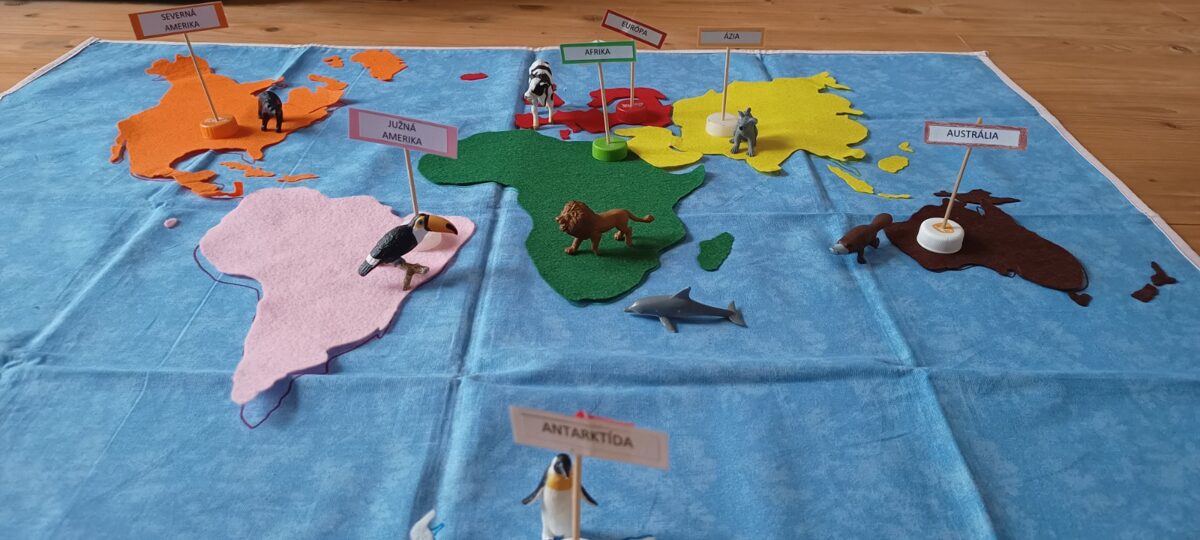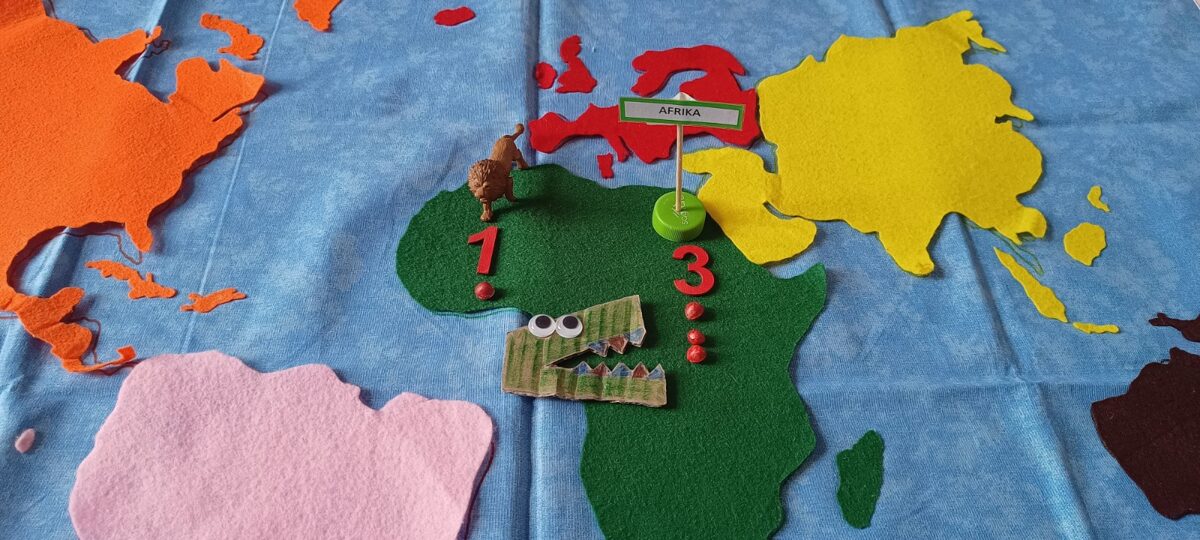Ideas for working with activity cards
I asked Hanka what she thought, which poem we should take further, to help parents, teachers, tutors get the idea about connecting the exercises with education. Hanka answered at once: The Lion.
Breathing in, and breathing out, let’s begin…
First verse
“I have a mighty roar and mane, and I live on a grassy plain”…
Children, do you know what a lion’s grassy plain is called? The answer is likely: “No, we don’t.”
• A tool I use is a fabric map of the world, the continents are made of felt.
• You can find it here Map

• If you can’t see yourself putting that together, why not just get an ordinary poster of the continents.
Then, the children put the coloured felt down on a cloth background, and I tell them what each continent is called. I make flags with the continent names, by attaching toothpicks to plastic bottle lids using a glue gun, and add a small piece of laminated paper with the name of the continent.
Moving on from geography we come to language, reading out the names together, and asking questions.
For example, Africa:
✔ What letter does the word Africa begin with?
✔ Let’s spell out Africa – A F R I C A.
✔ What letter does the word Africa end with?
✔ Can you write the letter A on a piece of paper?
✔ Circle each A in the word AFRICA.
✔ I make simple cards on hard paper and write the word A F R I C A with large enough letters, leaving out, say, the letter R – to add to A F _ I C A.
Having looked at
language, I link the topic to arithmetic:
✔ I have prepared some pebbles, balls, and wooden numbers.
✔ How many times would you clap in rhythm to say the word Af-ri-ca? Answer: three times.
✔ Children point to the number 3 and select the number of pebbles that corresponds to the number.
✔ I carry on like this, using miniatures of animals that live on the continent.
✔ How many times would you clap to go with the word li-on, for example. Answer: twice.
✔ Then compare the numbers with each other.
✔ Between the two numbers, we can put a > greater than, < less than or = equals sign.
✔ The signs are made of cardboard and can take the form of a crocodile.
✔ I put the crocodile with its jaws wide open toward the side with more pebbles, because it is very hungry and wants to eat all the pebbles.
✔ As a bit of fascinating extra information, mention that a crocodile will actually swallow some stones, to help him ‘grind up’ food in his stomach.

I prepare miniatures of animals, one typical of each continent. For Africa, it would be the lion, as expected. I carry on talking and describing: “On this continent, children, there is a savannah, where we can find a lion.” Explaining what a savannah is can be helped by pictures, or a description that it is a grassy, sparsely tree-covered landscape. The name sounds very technical, so a picture can help, and we can tailor the explanation or illustration as befits the child’s age.
Everything I am proposing is intended just for inspiration. The whole concept is about doing things your own way. .